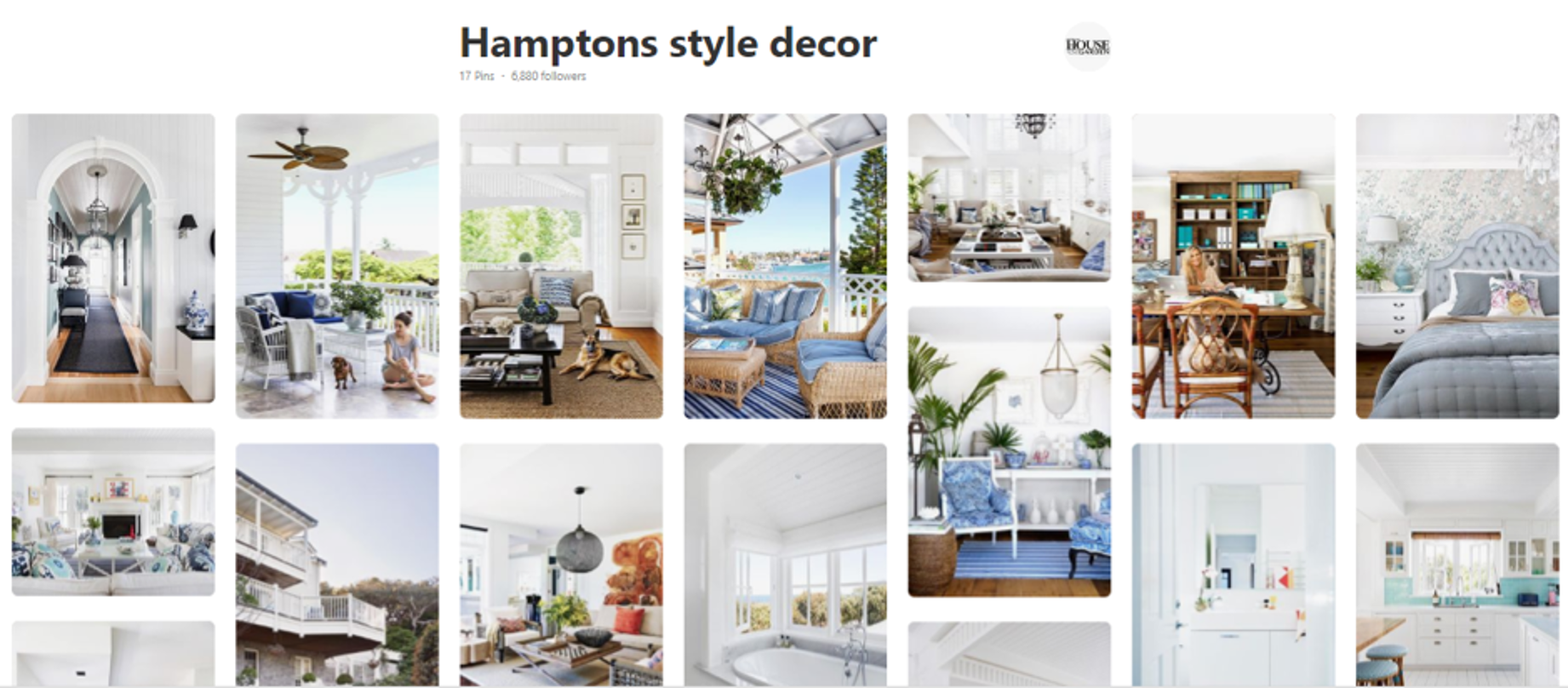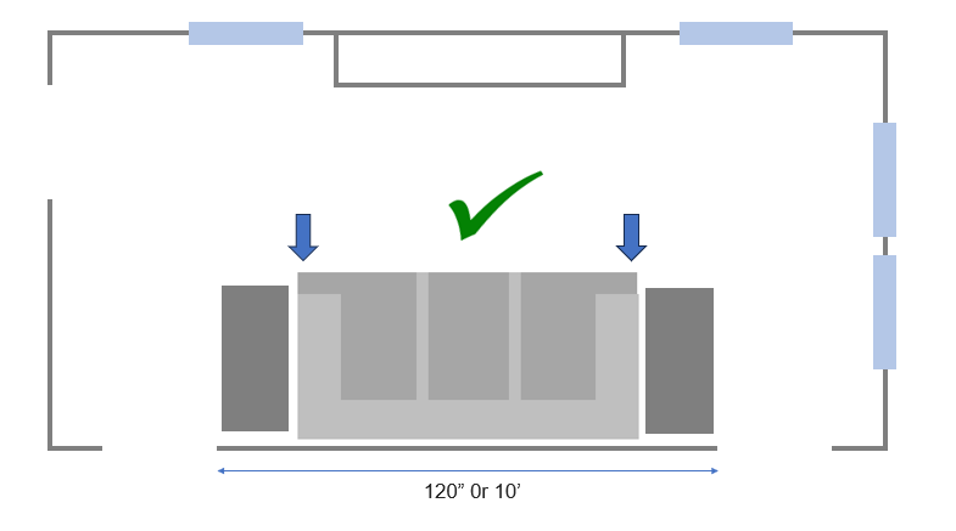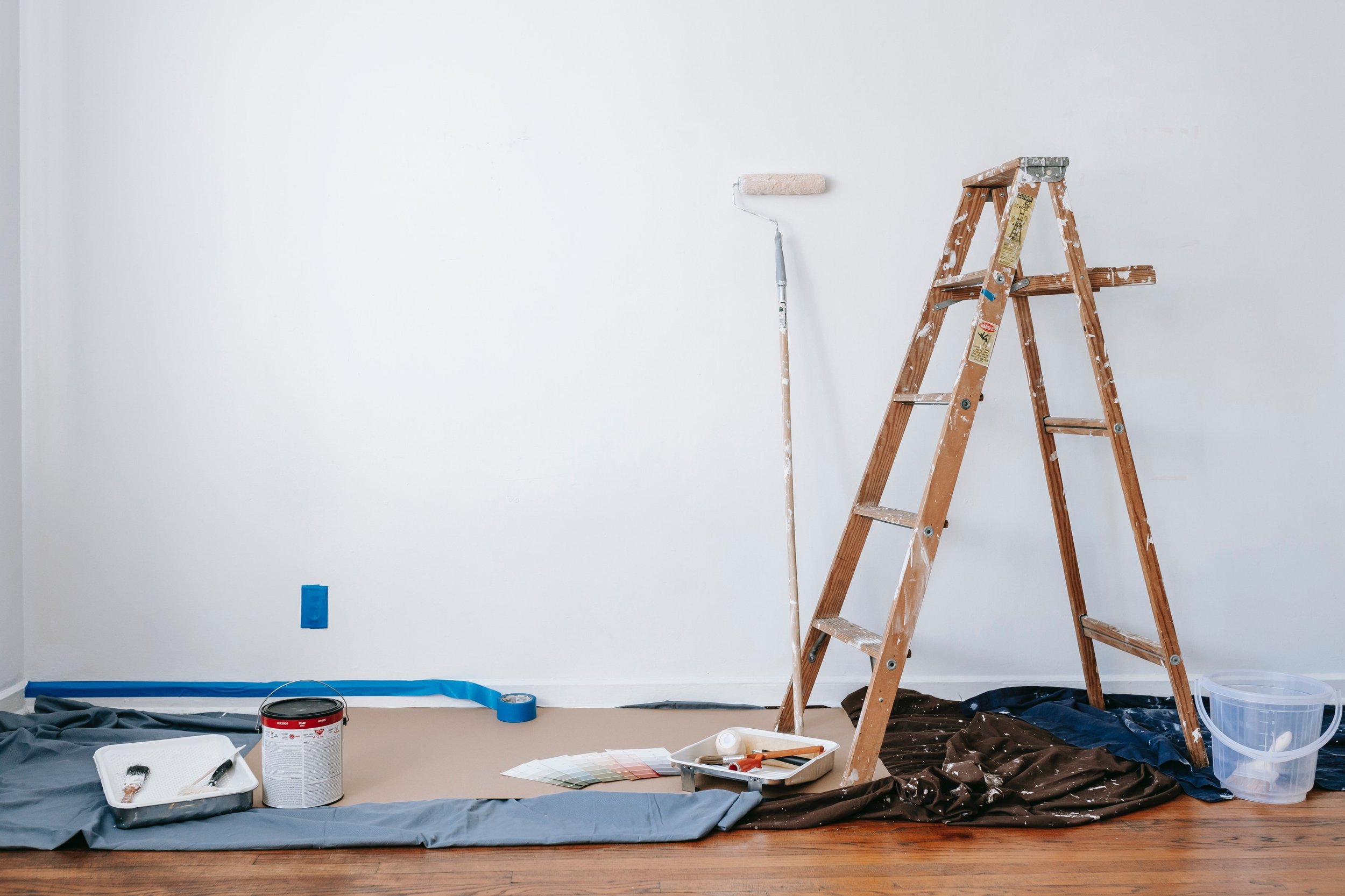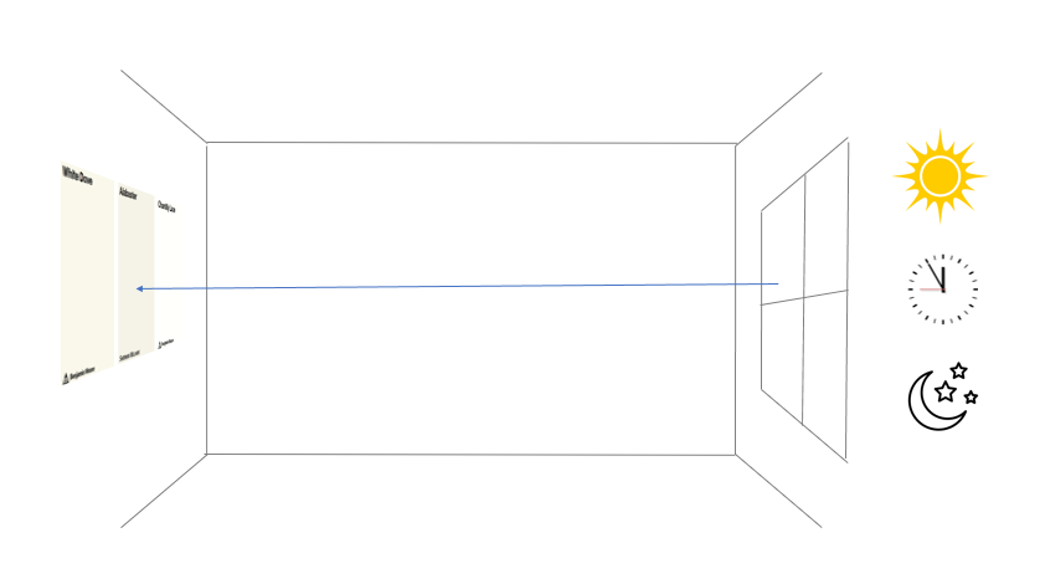What to do Now, Next, and Later to Complete Your Home Decorating Projects Like a Pro!
One of the most frequently talked about “problems” I hear from my interior design clients is that they don’t know how to start their decorating projects.
This often breaks my heart because the process for starting is not always the trip up. It’s the finishing that causes the real pain…
Even though every client project is different, with different goals and end results, there are a few things that I tend to see over and over with nearly every client as we begin working together.
When I hear, I’m so lost I just don’t know where to start. Or I hate even going into this room because it’s just so uncomfortable, I know there’s a fundamental disconnect between what the room is – the benefits and limitations – and how my client is processing those benefits and limitations.
All told, I know that awkward, tricky, and small rooms come with a host of limitations, but I also know that even the most stubborn awkward, tricky, and small room can easily become a beautiful, loved, and cherished room. (Trust me, I have many hundreds of room transformations that back-up this proclamation.)
So, today I thought I’d let you in on a process that I think is super helpful for getting a makeover project started and ultimately, completed.
This is the closest I’ve come to a “system or a recipe” for interior decorating that will work for every room no matter the size or shape.
Let’s get into what to do now, next, and later to complete your home decorating projects so you can transform your space.
1. What to do Now, to Start Your Home Decorating Makeover Project like a Pro
The “now” part of the process is about exploring.
It’s not the time to make specific decisions or to jump right into buying anything for your space.
This is all about wishing, dreaming, and exploring possibilities.
Invest in some magazines that show styles you like.
If you’re a “deep dive” type of person, this is the time to really get into the pictures in the magazines.
Go through the magazine layouts once and note the rooms that you’re really drawn to.
Mark them with post-it notes, or book mark the pages in a way that makes sense for you.
Then go through the pages again.
On the second time through, make notes about the details you see in each layout.
Traditional Home
Note things like the color of the walls, the color of the upholstery or the wood tones of the furniture, rugs, art, or whatever is catching your eye.
This helps you to narrow down all those style cues that appeal to you.
It’s not important to know exactly what things are called, this part is purely visual.
You can also skip the magazines in favor of compiling pictures on your phone or tablet too.
Thornhill Park
If you like the digital route better, put together a Pinterest board for the style of room you’re looking to create.
Make notes on each pin, much like the post-it notes in the magazine example, indicating what you like about your pins.
(According to Influencer marketing Hub, The vast majority of Pinterest users (85%) have shared that they visit the platform when starting a new project.)
You can also copy and paste the pictures from the internet right into a program like Milanote or PowerPoint and then make notations for why you’re drawn to the picture.
So, this first “now” step is all about gathering inspiration and figuring out what you’re most attracted to.
The next step in the “now” process is focusing on the common details.
As you look back over your pictures from magazines or from your digital pictures, notice the times certain things repeat from one image to the next.
You may notice that the wall color you love most is white or neutral in all the pictures you like.
You might find that the wood tone that you’re most attracted to is medium tone wood, not too light or too dark, for example.
You might discover all the accent chairs you gravitate to have tufting in some way, or that each sofa you favor has a skinny arm and a light color fabric.
These are the details that will start to emerge, and you should start to see patterns for everything from the style of art you favor, to the colors and style of area rugs, décor, and more.
Also, as you study your favorite pictures, notice how the rooms are presented.
Are they balanced and symmetrical?
Do they have a minimal feeling, or do they have lots of stuff displayed in a pleasing way?
Consider how the pictures you’re inspired by make you feel.
Do they make you wish your room was as relaxing as it seems in the picture?
Do you feel like you could move right into the picture and live happily ever after?
It sounds corny, but the good feeling way your inspiration pictures make you feel is powerful and when you pay attention to that, you can accelerate this whole process.
It’s as simple as realizing that if you can nail the feeling you want for your room, you’ll want to spend time in that room because it makes you feel good to be in it.
Write a list of the most common things you see repeatedly in your pictures.
This will help you stay on track when it’s time to shop.
Your list might include things like this:
This list can keep you on track and prevent you from making snap buying decisions.
For example, say you find a great sale featuring a sofa that you sort of like but that doesn’t quite fit the style of sofa you are really envisioning for your space.
This one has rolled arms, a skirt, and a darker fabric, but the price is VERY appealing.
Sprintz Furniture
As you refer to your list, you see that this style of sofa is not at all what you are envisioning for your makeover, so you pass on it.
The list becomes your navigation system, so you stick to the look you want for your makeover project.
2. What to do Next, to Continue Your Home Decorating Makeover Project like a Pro
The absolute most important next step is to measure your space.
Measure the room length and width, then measure every wall segment, door, window, architectural feature.
Don’t forget to measure the ceiling height too – especially if you have lower ceilings.
Measure any exterior door, enclosed staircase or elevator that will be in play to get furniture into the house and ultimately into the room you’re making over.
I like to draw out a bird’s eye view floor plan to record all my measurements onto.
This is very helpful to refer to as you plan out the furniture purchases for your space.
Here’s a scenario to illustrate my point: Say you have a narrow living room with a combined fireplace and TV focal point.
The best place for the sofa, is right across from the combined focal point. But that wall has 2 open doorways and only 120” of wall space in between the two doorways to fit a sofa.
The narrowness of the room will prevent you from floating your furniture arrangement, so you need to be very mindful of what will fit in that 120”.
If you want to have a ‘roomy’ 3-seater sofa, and two end tables, you must stay within that 120” or 10’ parameter.
You won’t be able to fit a 100” sofa and two 16” wide end tables, because that would be 132” and your furniture would partially block the doors.
However, an 86” to 88” sofa and two 16” end tables will fit with an inch or two to spare.
Another important thing to think about when you have a definite parameter like 10’ of wall space is to pay attention to the body shape of the sofa and tables.
You want to avoid overstuffed sofas with bulky arms.
You also want to avoid “fussy” details on the tables like cabriole legs or construction that bows outward because it will add unnecessary bulkiness that can affect your pathways and make the furniture layout feel heavy or crowded.
It’s best to stick to slim or tailored pieces if you have a wall like this.
After you have the room dimensions down and you know how much space you have and where your “tricky” areas are, you can start planning the space in more detail.
Next, make some specific choices regarding all the things that give your room that unique feeling you’re seeking.
Raymour & Flanigan
Here’s where you pick details like area rugs, upholstery and/or leather, wood tones, metal tones, art, pottery, glass, accent furniture upholstery, and wallpaper patterns, you might want.
Don’t let this part of the process overwhelm you.
Refer to your list to review all the common points you wrote down and then also refer to your original inspiration pictures to keep you on track.
Your original instincts are usually right in line with what you want, so don’t discount them.
In other words, you already have a bubble of inspiration. Stay in your bubble and you’ll avoid the frustration and confusion of too many choices. When you do this, I guarantee you’ll make progress.
The last part of this next step is to make final decisions.
By this point you’ve found the furniture that will fit properly in your specific space, made all your color and style choices, picked all the finishes, art and accents that will bring your dream room makeover to life.
Congratulations! Now make your purchases and move on to the last step in the process.
3. What to do Later to Finish Your Home Decorating Makeover Project like a Pro
In most cases, you’ll have to wait a bit for the furniture you ordered to come in. This is especially true for custom furniture pieces.
During this time, you’ll have the best opportunity to get the room ready for the final reveal.
It’s the perfect time to paint!
The best way I’ve found is to pick your paint color is to choose it from one of the pieces that will live in the room. I like to refer to the colors in an area rug, accent fabric or art to pull colors from.
If your original inspiration pictures have a neutral, white, or light off-white wall color, refer to your actual rug or art and pull that white or light tone from it.
Next, go to the store and buy a sample size of the wall color.
Some retailers sell peel and stick swatches of paint colors, others sell small jars of paint that you can apply to the wall.
It’s important not to skip this step because paint colors look different in your actual room than they do in the store or in glamour shots on their brochures.
I suggest that you limit your choices to no more than 3 paint colors at a time.
More than that and you’ll start to second guess your choices. Plus, out of three choices,
one will usually emerge as the clear winner.
Apply your paint colors opposite the brightest window in the room and don’t make your final decision on them for at least a day or two.
That will give you time to look at the samples in natural light, at different times of the day, and in artificial light at night.
The appearance of the colors will change in different conditions so it’s important to have all your elements present in the room when considering your paint color.
So, have fabric and leather samples, an example of the wood finish like - a drawer or shelf from your case goods, and have your initial inspiration piece: art, rug, fabric, in the room to see how everything looks together at the different times.
When you’ve arrived at the right paint color choice, paint the room. Don’t wait. You’ll want it done before the furniture arrives.
After the painting is done, it’s time to install the window treatments.
You’ll want to hang curtains, install shades or blinds before the furniture is placed in the room so you don’t have to move furniture or awkwardly scoot around stuff to get close to the windows.
By this time, all the “hard” work is done.
You’ve made all the decisions on style and color. You’ve picked the appropriately sized furniture and you’ve painted the walls and installed the window treatments.
The last of the last things is to place your furniture as you’ve planned it based on the parameters of your room, so you can finish up with all the décor that you made notes about in your ‘what to do now’ phase: pottery, tabletop décor, plants, etc.
Michael Helwig Interiors
There you have it, a glimpse into the system and sort of “recipe” for how to start and complete a room makeover from a what to do now, next, and later perspective.
I’d love to hear what you think about this process.
Have you ever been stuck with how to start a decorating project?
Would a process like this help you to focus on your end goal?
Is there something else you would like to add to make it even more successful? Tell me all about it in the comments below.
Read Next:
Small Room Solutions: The Power Of Focal Walls
Learn how to distinguish between focal walls and accent walls and determine which one is best suited for your room. In this post, I share my own experience with both wall types and offer advice on how to create a striking focal point while maintaining balance and harmony in your space. Whether you're designing a traditional or modern room, this guide will help you make a confident decision.
Join the Fun!
If you enjoyed this post and you want to keep seeing my weekly blog, the best way to do that is to subscribe.
You can subscribe by downloading my 11 Secrets Only Designers Know to Make Your Space Rock. If you’re curious about how decorators and designers make a home look magazine ready, you’ll love taking a gander at these 11 secrets. You’ll learn how to style your room from the floor up and it will work for ANY space you have.
I write about small space design and decorating, sustainable furniture options, positive self care and a variety of do-it-yourself home décor.
I’d love to connect with you!
“Michael Helwig was top-notch, very professional and responsive to my needs. He allowed me time to explore ideas and try out a variety of combinations until we found the perfect fit. Michael provided detailed information and offered beautiful ideas to make my dream living room become a reality. The furniture he sourced has totally transformed my living room space. Everyone that has seen my new living room has one word, WOW! A special thank you to Michael for a wonderful experience.”
“Michael was very knowledgeable and guided us, with great patience and good humor, through the process of designing our dining room and helping us find the perfect sleeper sofa. He offered really helpful advice when we asked questions - which was often - but at no time did we ever feel pushed. He helped me when I felt like I couldn’t make one more decision. When my new furniture finally arrived I realized everything down to the pillows was perfect. I couldn’t be happier!”
Michael Helwig Interiors
Michael is Principal designer and blogger at Michael Helwig Interiors in beautiful Buffalo, New York. Since 2011, he’s a space planning expert, offering online interior e-design services for folks living in small homes, or for those with awkward and tricky layouts. He’s a frequent expert contributor to many National media publications and news outlets on topics related to decorating, interior design, diy projects, and more. Michael happily shares his experience to help folks avoid expensive mistakes and decorating disappointments. You can follow him on Pinterest, Instagram and Facebook @interiorsmh.






























